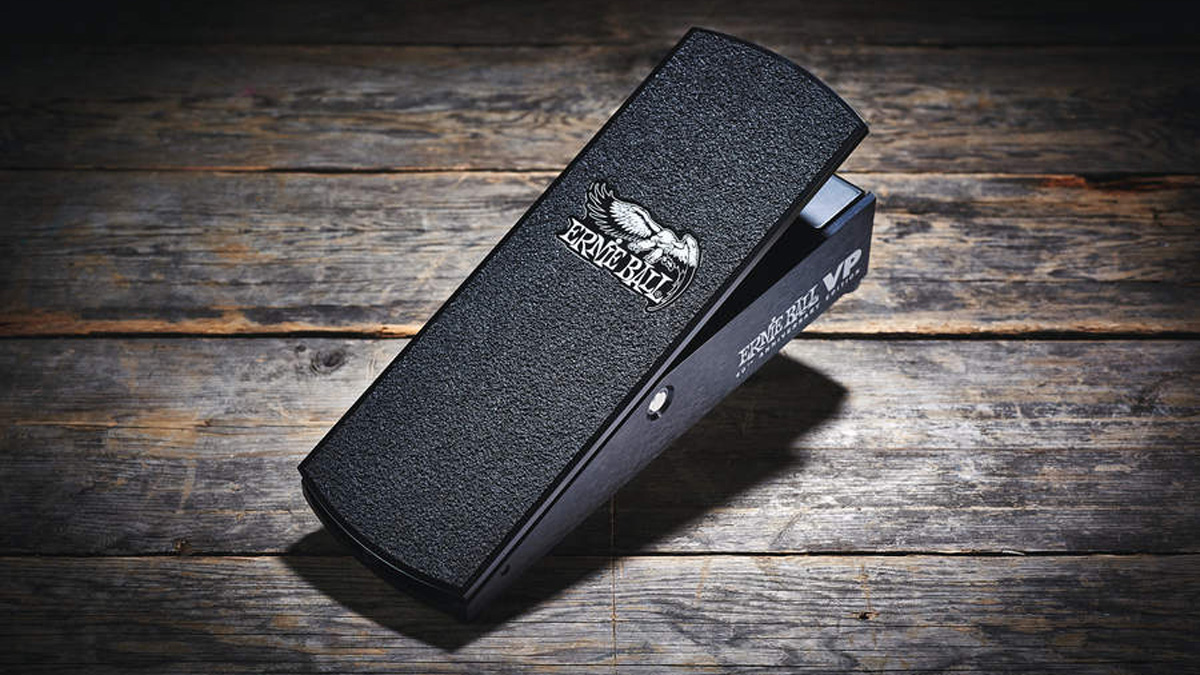MusicRadar Verdict
This basic design has been going strong since 1977 and that Kevlar update may give it another 40 years.
Pros
- +
Rugged construction.
- +
Non-slip treadle surface.
- +
Smooth action.
Cons
- -
None really but it will take up a lot of space on your ’board.
MusicRadar's got your back
Volume pedals aren’t enthusiastically embraced by all guitarists, but for those who have used one in the past few decades it’s highly likely to have been an Ernie Ball, so much so that the company can make the claim that it’s the world’s best-selling volume pedal as it launches this model to mark its 40th birthday.
A departure from the usual Ernie Ball aesthetic, the 40th Anniversary VP looks really slick in a new slate black finish. The metal-brushed steel chassis casing is the same solidly-built construction as before but where previously a length of string (which didn’t always inspire confidence) connected to the treadle took care of the action of turning the pot, we now get a PVC coated, braided Kevlar cord, which Ernie Ball says “dramatically improves strength, increases traction, and ensures consistent tension throughout the foot sweep.”
This is borne out in use: the feel is perfect with just the right amount of tension underfoot and silkly smooth movement as you depress or heel back the treadle, which sits exactly at any angle at which you leave it.
Sounds
The pedal is designed to work with both passive or active signals and we experienced no problems wherever we put it in the signal path. At the start of your chain it will handle a signal directly from your guitar or from any pedal that needs to ‘see’ the guitar signal first, and it also works fine further on in your signal path depending on where you want your volume control - favoured options being either post-dirt pedals but pre-delay/reverb, at the end of the pedal chain before the amp, or in the amp’s effects loop. Passive volume pedals sometimes get a bad rep for sucking tone but we noticed no such treble loss with the VP.
Whether simply used as a foot-controlled master volume/signal mute or creatively manipulated to swell notes in, this is a quality pedal that can add versatility to your signal chain.
Trevor Curwen has played guitar for several decades – he's also mimed it on the UK's Top of the Pops. Much of his working life, though, has been spent behind the mixing desk, during which time he has built up a solid collection of the guitars, amps and pedals needed to cover just about any studio session. He writes pedal reviews for Guitarist and has contributed to Total Guitar, MusicRadar and Future Music among others.
“Chinese Democracy was a boring record. But calling it Guns N' Roses was not honest. It was totally a solo record”: GN’R’s ex manager takes aim at Axl Rose
“Instead of labouring over a perfect recreation, we decided to make an expanded counterpart”: Chase Bliss teams up with Mike Piera for Analog Man collab based on the legendary King Of Tone
“It’s about delivering the most in-demand mods straight from the factory”: Fender hot-rods itself as the Player II Modified Series rolls out the upgrades – and it got IDLES to demo them











